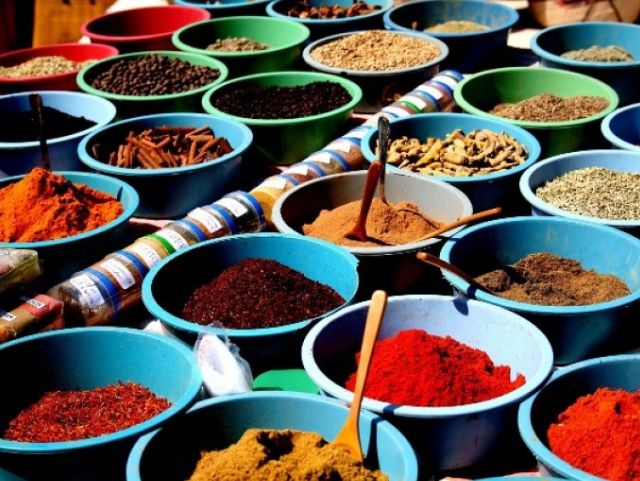Traditional ethnic cuisine from across the world is fairly healthy. However, modernization has led to a focus on speed and taste, rather than wholesome nutrition. This translates into high calorie, high fat, processed food that is loaded with sodium, complex sugars and questionable additives. Read on, for a review on some on the healthiest and unhealthiest cuisines from around the world.
As a foodie myself, I have tried various ethnic cuisines with great leisure. I have marveled at how it is rare to find overweight French and Japanese women. And why there is so much obesity and illness in India despite a largely vegetarian diet. Let me start off by saying that good health and longevity is not related to food alone. It also depends on how much (or how little) you consume, division of mealtimes, portion control, how much exercise you get, genetic and hereditary factors, and bad habits (smoking, alcoholism and substance abuse). Even so, some ethnic diets have created a lot of buzz in recent years for their high nutritional value, cancer-protecting and heart-protecting properties. Although I am personally opposed to wide, sweeping generalizations, this article will help you gain a fair idea on why some cuisines are healthier than others. Hopefully this will help you incorporate some healthy eating habits in your own home, without too much deviation from your own culture.
The Mediterranean Diet
This ‘superdiet’ has taken the fancy of all health and nutrition enthusiasts. This diet focuses on the eating habits of the people of Crete, much of Greece, Southern Italy, parts of Spain, Portugal and Southern France. The diet in most Arab and North African countries is also very similar.
This diet includes high consumption of grains, legumes, seeds, leafy greens, nuts and beans. Olive oil is the main source of dietary fat; while cheese and yoghurt are the main source of dairy. There is a good balance of fruits and veggies. Food is mostly unprocessed. For dessert, the focus is on fruits and honey, rather than sugar. They only consume small amounts of red meat and moderate amount of fish, poultry and wine. Focus is on oily fish like salmon, sardines and mackerel which are rich in heart protecting omega-3 fatty acids. Saturated fat makes up for less than 10% of their calorie intake.
This diet has received global recognition in protecting against obesity, Type 2 Diabetes, cardiovascular disease (cardiac arrest and stroke) and some protection against cancer.
On the flip side, this is an expensive diet to follow if you do not live along the Mediterranean coast. It can be rather heavy on butter and phyllo dough. Besides, what makes this diet work is the way Greeks eat their meals – by sharing a mezze platter, which helps in portion control.
Other European cuisine – French, Italian, German and Spanish
French culinary arts and French pastry are popular and well loved. The pastries are loaded with carbs, butter and sugar. Italian pastas and German currywurst are bursting with calories, and can make you gain weight very quickly if you overindulge. Spaniards and Italians love their dairy and cheese. However, some of their star ingredients are tomato, olives, garlic, basil, parsley, herbs (oregano and rosemary) and small amounts of red wine – rich in antioxidants like lycopene and resveratrol. Europeans make their diet work for them by going for smaller portions (especially in France), smaller plates (think Spanish tapas) and having slow, leisurely meals (which brings early satiety and lower craving for carbs). Walking and cycling is a way of life in Europe, keeping people (young and old) agile and strong.
The Japanese Diet
The Japanese eat a lot of seafood and vegetables. They eat only small portions of beef and pork. There is very little dairy like cream, butter or cheese. They eat a lot of calcium rich vegetables like broccoli and bok choy. Their food is served in small portions, and this makes it a very healthy cuisine. The Japanese love their tea – green, white and black. This provides their system with a boost of cleansing and energizing antioxidants. The people who live on the island of Okinawa often live long enough to celebrate their 100th birthday!
Soy is a staple in Japanese diet, however large amounts of soy can mess with your hormonal balance, as soy contains estrogenic compounds. It can also effect thyroid function. The cons – It is fairly high in carbohydrates, depending on how much rice and noodles you eat. This diet is also somewhat poor in fiber, as the vegetables are mostly sea vegetables and there is not enough cereal in this cuisine. The high level of mercury in fish (like tuna and swordfish) are also a concern. This is also an expensive diet as a lot of the ingredients are not easy to source.
The Chinese Diet
The Chinese diet is very similar to Japanese diet. The Chinese believe in balance. Each dish is a good balance of carbs (rice or noodle), protein (beef or duck), vegetables, herbs and condiments.
However, there are larger quantities and portions of beef and pork that is consumed. Also most people across the world eat their Chinese meals at restaurants or as take out. The oil, sodium and MSG (monosodium glutamate) levels are quite high in such food, making it a poor choice for those with heart or blood pressure problems.
Vietnamese and Thai Cuisine
This diet uses a lot of seafood, vegetables, fresh salads, fresh herbs (think basil, cilantro, mint, lemongrass and coriander), sauces (fish sauce, hoisin sauce and shrimp paste) and spices (think dried red chillies and galangal) – the Vietnamese cuisine is a veritable edible apothecary! Most of their food is lightly cooked in broths (rather than oil), without letting any of the original taste or precious nutrients go to waste. The food is often a balance of sweet, salt, sour, bitter and spice. It is light in calories and bursting with flavor. The use of dairy is minimal. Meat is served in small bite-size pieces, and the focus is on organ meat.
Here too, portion control and correct selection is important. Too much tapioca can mess up your pancreas. This diet includes a lot of rice, noodles, coconut milk, peanut butter and fried food. So picking the wrong items from the menu can actually flood your circulation with excess fat after a nice Vietnamese dinner!
Western Diet (mostly refers to USA and UK)
Western diet has been universally thrashed and abused as the unhealthiest diet in the world. Which is sad, as this pat of the world also has some of the best produce. This diet is high in sodium, saturated and trans fat, complex sugars and refined grains. There is too much dairy, too much meat, too much alcohol and too little fiber. There is very little raw and fermented foods in this cuisine. American restaurants, delis and fa(s)t food joints are known for their large portions. Most of the population here are overweight, with a high propensity for Type 2 diabetes, coronary heart disease, colon cancer, breast cancer and hemorrhoids. Unhealthy eating habits begin early in life, and most of the food is over processed. There is very little water, or raw and fermented foods in this cuisine.
However there seems to be hope. There is a growing trend for organic food and vegetarian options. Sugar intake among youngsters is falling. And people in the West now have a great variety of ethnic cuisines to try from.
Mexican Diet
Mexicans beat Americans when it comes to the highest percentage of obese population in the country. Their diet consists of a lot of beans, corn, sprouts, soups, peppers and vegetables – all the essential nutrients are covered. But most of their cuisine is fried, cooked in lard or heavy on cheese. The portions are very generous as well. However, you can still have a hearty yet healthy meal if you select your food wisely.
Indian Diet
Traditional home style Indian cooking is extremely healthy. A lot of Indians are vegetarians and teetotalers. Despite little to no meat consumption, this diet is still fairly well-rounded in proteins and essential vitamins & minerals. This is thanks to the high consumption of grains and legumes in generous proportions. Indians love dairy, which is the main source of calcium. They love their tea – a very healthy habit. There is also a fair consumption of fermented foods like yoghurt and yeast. Onions, ginger, garlic, lemon, mint and cilantro are a part of almost every dish – garlic protects the heart and lowers cholesterol levels. Indians use some of the healthiest, most potent cancer-fighting spices in the world. Spices like turmeric, pepper, cloves, cumin, fennel, asafoetida and fenugreek are a part of every Indian kitchen. These spices aid metabolism, fights against cancer and Alzheimer’s disease, promote healthy digestion and boost immunity.
So why is heart disease and diabetes rising among Indians? To some extent, this is a result of Westernization. Indian food is tedious and time consuming to prepare. So more and more Indians are gravitating towards fast food and processed food. Indians love their sweets and snack time, and nutrition is often sacrificed for taste. Snacks are mostly deep fried and high on sodium. The sweets are heavy on ghee (clarified butter), sugars and syrup; rather than incorporating fruits and nuts. Restaurant cuisine gravitates towards meat, cheese, cream and sugar. Restaurant cuisine can be lacking in vegetables, fruits, salad options and fiber. Genetic factors and lack of exercise also contribute to the health menace.
Scandinavian Diet
Due to the grim climatic conditions in Sweden, the traditional diet has very little fruits and veggies. They mostly use root veggies like potatoes, radishes and turnips. But the Scandinavian diet is rich in grains like rye, oats and barley. They love their seafood and crispbreads. Most of the food is fresh, and the people believe in eating small meals. Obesity levels are very low in this part of the world. No wonder that Swedish, Danish and Nordic foods are becoming very popular in the UK.
African Diet
Traditional African diet uses lots of grains, legumes, plantains, tubers, vegetables, spices, oil seeds, lean meat and game meat – very well balanced, high in flavor, and low in fat and sodium. Food is mostly boiled, steamed, grilled, roasted or baked in ashes. Ethiopian cuisine in particular, is becoming wildly popular in the West. Injera, the traditional Ethiopian flat bread, is made of teff flour, which is high in protein, fiber, iron and vitamin C. The food is mostly unprocessed, and the produce from this region is largely organic.
Be it the Vegan trend or the Macrobiotic fad, more and more people are experimenting with healthier diet options. The world is becoming a smaller place. Jackfruit is now available in the United States, and Feta Cheese is relished in India. Most traditional ethnic cuisines are largely healthy and well balanced. However with families becoming smaller and both partners working, life has become hectic and robotic. People do not have several hours a day to cook wholesome meals for the family all day round. It has become very easy to rely on highly processed junk food. Sugary, starchy and fried food are also highly comforting in these stressful times. This is becoming an important reason for rising ill health in South East Asia and the Middle East. A reversal to home style cooking and a more cultural tilt to your cooking will foster good health and longevity across the continents.




